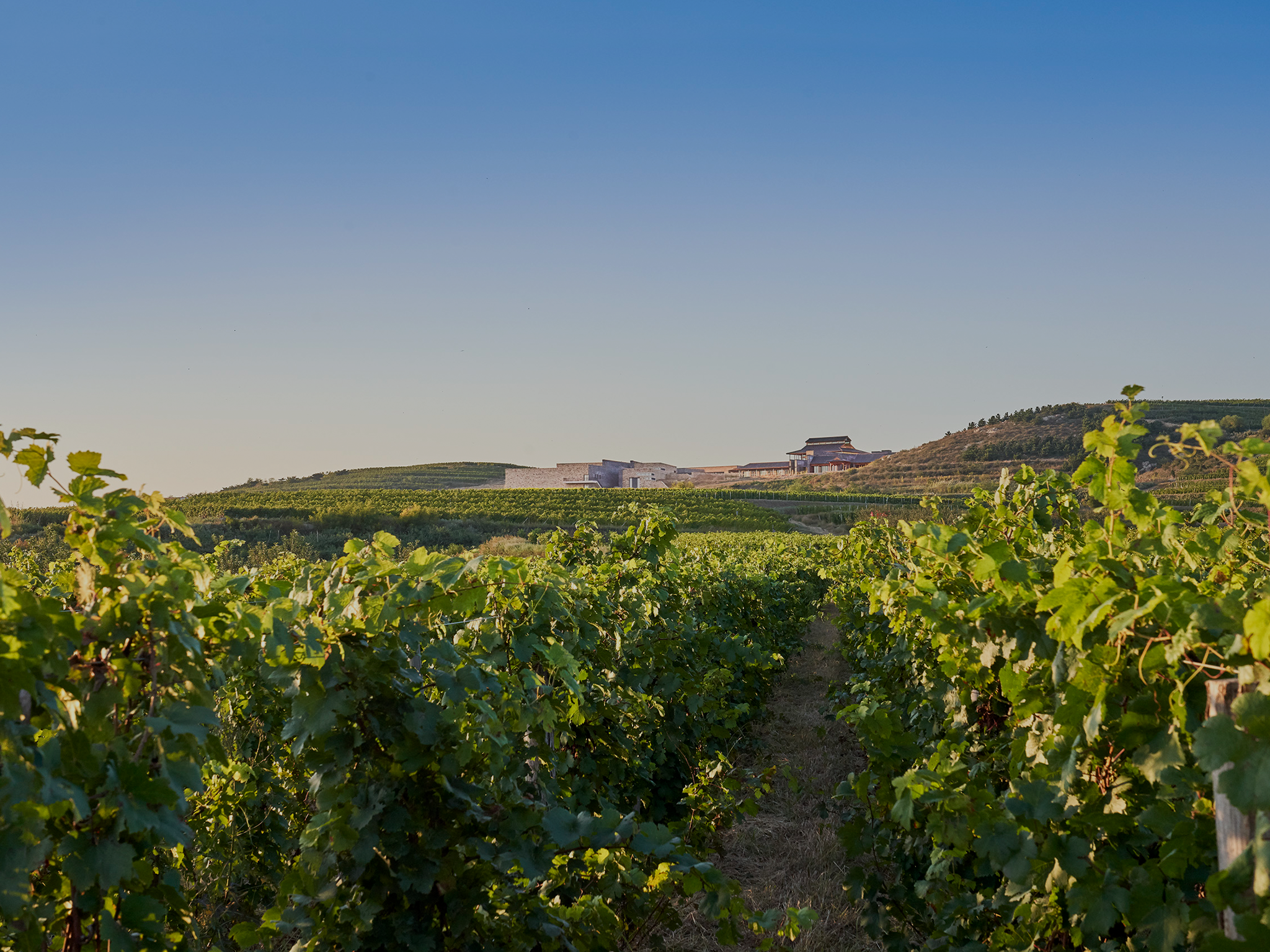Hu Yue

The vintage
2020 was a cool vintage, characterized by a relatively rainy start to the season. This enabled water reserves to be replenished in the spring, and an early start to the vines’ growth cycle following an exceptionally dry year. However, the rain also resulted in an increased threat of disease, providing a considerable challenge for the technical team. Throughout the ripening period, the vines benefited from an excellent late season, allowing the grapes to slowly reach optimal maturity. The meticulous zoning work carried out according to the degrees of ripeness for each terrace resulted in the harvests being spread over a longer period. In order to harvest at the best time, we made up to five rounds of selective picking among the various plots. These began on 3 September and ended on 28 October, with a total of 25 full days of picking.
Location
The Long Dai Estate nestles in the heart of the Qiu Shan Valley in the Shandong province, North-East of China. The climate in this region is tempered by the influence of the Yellow Sea, about 20 km away. Highly dependent on agriculture, this region benefits from both mild winters and granite soils, making it favourable for viticulture.
Terroir
The 34 ha vineyard is spread over 420 terraces, following the agricultural tradition in the region.
This planting method respects both the landscape and the soil structure but also requires a lot of manual work as well as specially adapted machines. Everything has been organized to apply high-precision viticultural methods. Disbudding and green harvesting allow to reduce yields, permitting the grapes to reach full phenolic ripeness. Winter in this region is dry and cold, but less severe than in other parts of the country. Building up soil around the feet of the vines is generally sufficient to ensure frost protection. The summer is hot and includes a short period of rain in July and August, followed by two months of dry weather during the critical ripening period. The grapes do not ripen uniformly due to the terrace system, so the harvesting of each terrace is carried out in several passes to ensure that all grapes are picked at the optimum degree of ripeness.
Winemaking
This wine is produced using traditional vinification methods for emblematic Bordeaux grape varieties such as Cabernet Sauvignon, Cabernet Franc. Controlled pumping-over allows a respectful extraction of each cuvée to obtain harmonious balances between roundness, finesse and length. This year, the extractions have been carefully managed to avoid dry tannins that were feared due to the drought in the summer.
The more southerly grape varieties such as Marselan and Syrah, for their part, are vinified in a gentler way with extractions facilitating a slow diffusion of aromatic and phenolic compounds. These two grape varieties bring complexity and depth to the final blend. Following the malolactic fermentation, Hu Yue is blended after tasting each cuvée. It is then matured partly in stainless steel tanks (58%) and partly in French oak barrels from the DBR Lafite cooperage (42%), for 12 months. The combination of new barrels (10%) and used ones (32%) is essential to sublimate the final blend and reveal all its complexity and finesse.
Grapes
Tasting
Hu Yue reveals aromas of red fruit such as cherry and redcurrant, with spicy, liquoricey notes giving it a generous, powerful bouquet. After a fresh attack, the palate offers good roundness and length, underscored by fine-grained tannins and notes of sweet spices such as vanilla. On aeration, light roasted notes emerge, giving the wine a very well-balanced character.
Downloads

